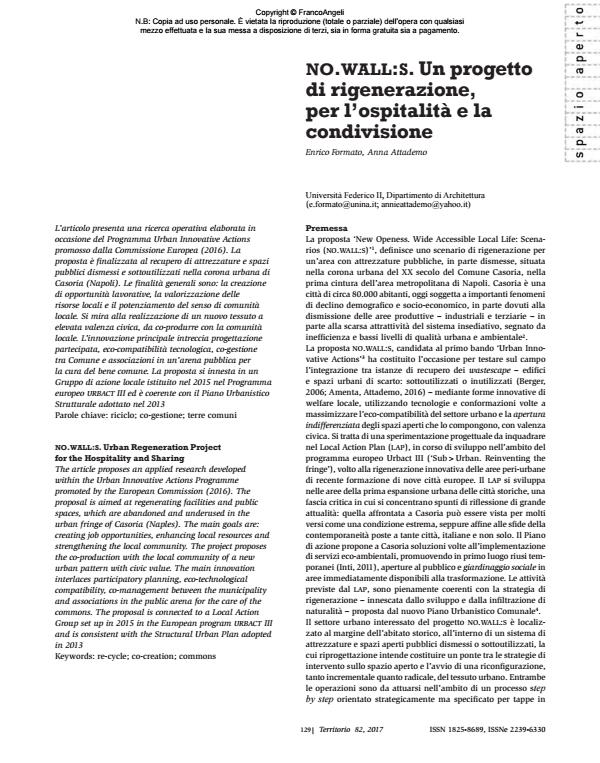No.Wall:S. Urban Regeneration Project for the Hospitality and Sharing
Journal title TERRITORIO
Author/s Enrico Formato, Anna Attademo
Publishing Year 2017 Issue 2017/82
Language Italian Pages 11 P. 129-139 File size 540 KB
DOI 10.3280/TR2017-082023
DOI is like a bar code for intellectual property: to have more infomation
click here
Below, you can see the article first page
If you want to buy this article in PDF format, you can do it, following the instructions to buy download credits

FrancoAngeli is member of Publishers International Linking Association, Inc (PILA), a not-for-profit association which run the CrossRef service enabling links to and from online scholarly content.
The article proposes an applied research developed within the Urban Innovative Actions Programme promoted by the European Commission (2016). The proposal is aimed at regenerating facilities and public spaces, which are abandoned and underused in the urban fringe of Casoria (Naples). The main goals are: creating job opportunities, enhancing local resources and strengthening the local community. The project proposes the co-production with the local community of a new urban pattern with civic value. The main innovation interlaces participatory planning, eco-technological compatibility, co-management between the municipality and associations in the public arena for the care of the commons. The proposal is connected to a Local Action Group set up in 2015 in the European program urbact III and is consistent with the Structural Urban Plan adopted in 2013
Keywords: Re-cycle; co-creation; commons
- Beyond Wastescapes: Towards Circular Landscapes. Addressing the Spatial Dimension of Circularity through the Regeneration of Wastescapes Libera Amenta, Arjan Van Timmeren, in Sustainability /2018 pp.4740
DOI: 10.3390/su10124740
Enrico Formato, Anna Attademo, No.Wall:S. Un progetto di rigenerazione, per l’ospitalità e la condivisione in "TERRITORIO" 82/2017, pp 129-139, DOI: 10.3280/TR2017-082023